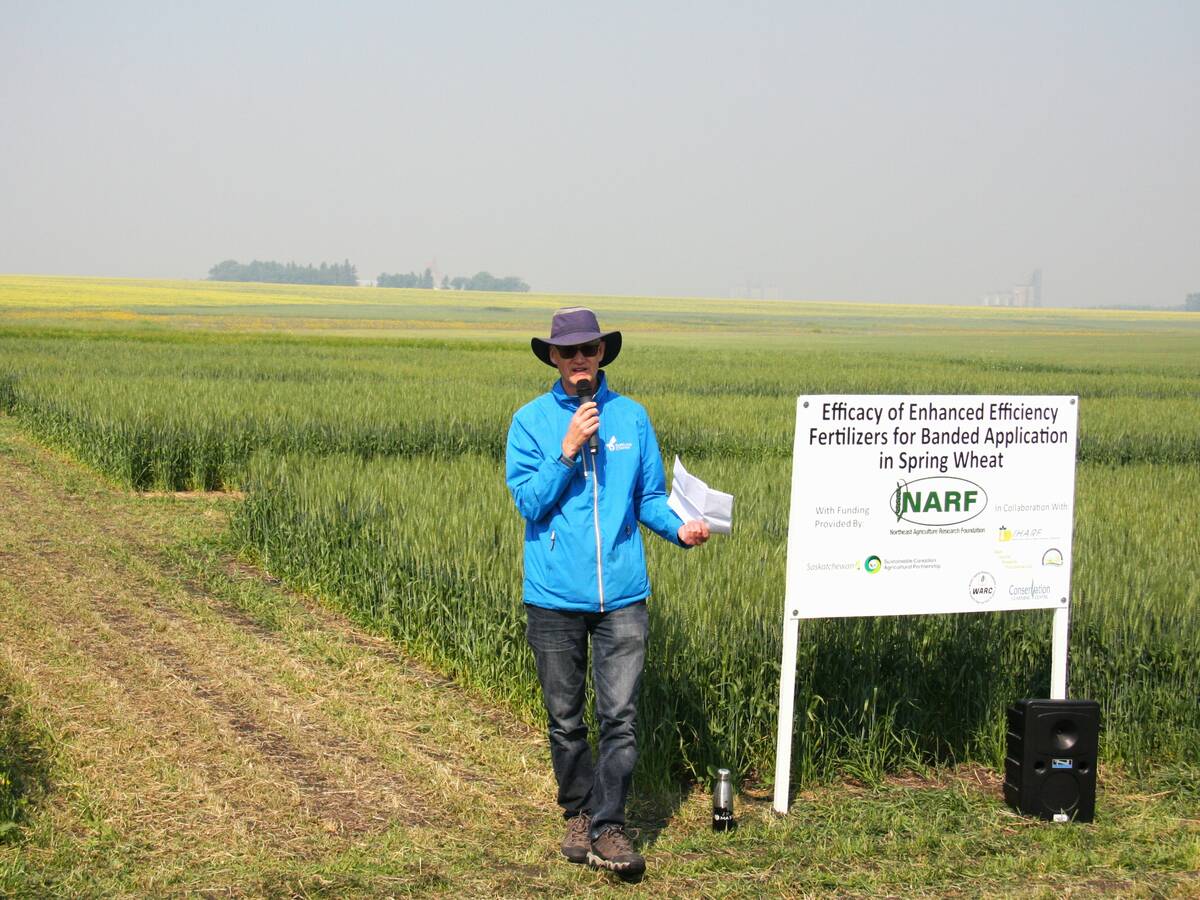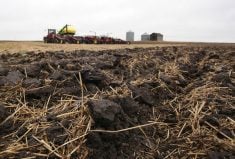John Deere replaces hydrostatic components with electric motors, but a spinoff in the process is a lot of electricity
John Deere’s new Electric Variable Transmission provides a stepless transmission in a high horsepower tractor class and marks a significant step toward the electrification of farm implements.
The new EVT will be available for all 410-horsepower 8 Series tractors including 8R, 8RT and 8RX models.
Douglas Felter of John Deere said the EVT is not a completely new transmission. Instead, the company built on their Infinitely Variable Transmission (IVT) and replaced the hydrostatic components with electric motors.
“It’s actually very similar to our current IVT. The difference being that in our current IVT the power input is done through the hydrostatic motors,” Felter said.
Read Also

Fertilizer method’s link to emissions studied
A researcher says others studying greenhouse gas emissions aren’t considering how the loss of nitrogen into the atmosphere correlates with fertilizer application or if there is an impact to yield.
The EVT enables tractors to change ground speeds faster compared to tractors with gear-shift transmissions, and it can also maintain precise speed control between .05 to 50 km-h.
It’s possible to monitor the loads an EVT is under, which improves diagnostics and increases its reliability.
Felter said the electric drive components in the EVT result in a less drivetrain noise.
“This transmission is actually capable right out of the gate with what I’ll call a large amount of power. It’s a hundred kilowatts that’s made available, and it’s not a hundred kilowatts total, part of which goes to the transmission. This is 100 kilowatts that is available to share out to an implement,” Felter said.
A Joskin slurry tank with electric motors on the drive axles has already been developed that can use the electric power generated by the EVT transmission.
“We’re driving four of the wheels with two axles on that (Joskin) tanker. By doing that you have extra traction because they’re able to utilize the weight of the tanker itself to add traction. So, you’re either able to really minimize slip or to maneuver a lot better with a lower horsepower tractor,” Felter said.
Now that a production tractor is available with the ability to off board large amounts of electricity, agricultural equipment manufacturers will quickly find use cases for the power.
For instance, Carbon Robotics already sells a three-point hitch mounted laser weeder and X-Steam-inator Agricultural Products is developing a system that uses steam to kill weeds in between the rows.
Both of these systems require large amounts of electricity that is currently generated by a three-point hitch powered generator, or by a separate unit.
“I think it’s opening new opportunities because the control capabilities of electric in many cases far outweigh that of hydraulics,” Felter said.
“We’ll get a lot more diagnostics, get a lot more control and in many cases a lot better longevity through the electric motors and the life cycle that they enjoy,” Felter said.
The 8 Series tractors equipped with the EVT will continue to have hydraulic systems for the foreseeable future.
“Many farms have several different implements that you’re moving from job to job. Maybe you’ve got an electric planter, but you still have a grain cart that’s primarily built up around hydraulics. So, I think it’ll be a little while before we see a major decline in the amount of hydraulics used on any given farm,” Felter said.
He said it’s too early to tell if the EVT will last longer compared to a hydrostatic-based transmission, but the company has more than 100,000 customer equivalent test hours on the EVT and they have long design lives.


















